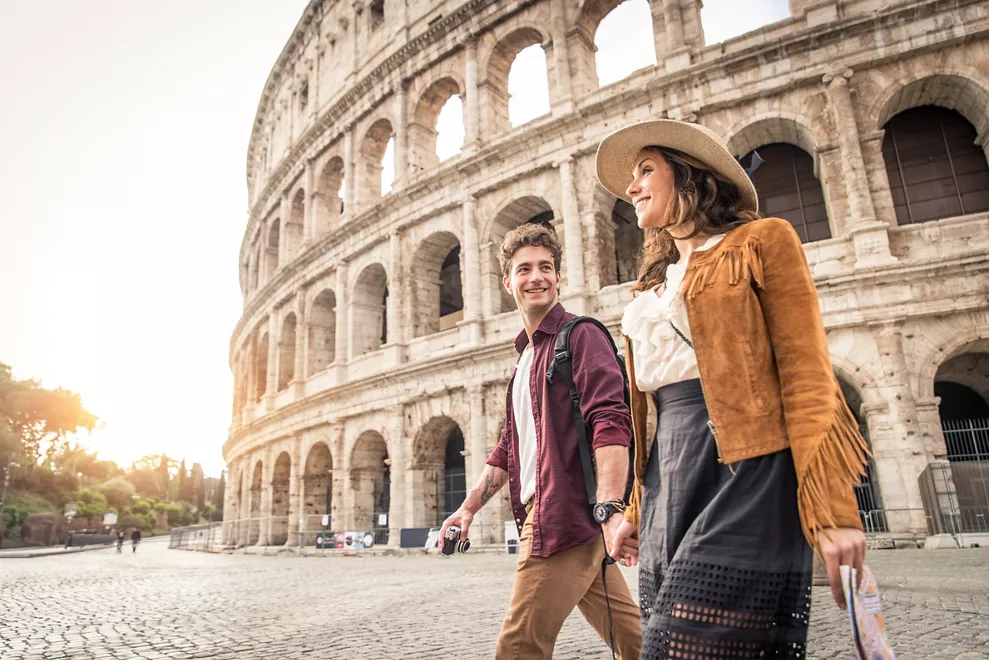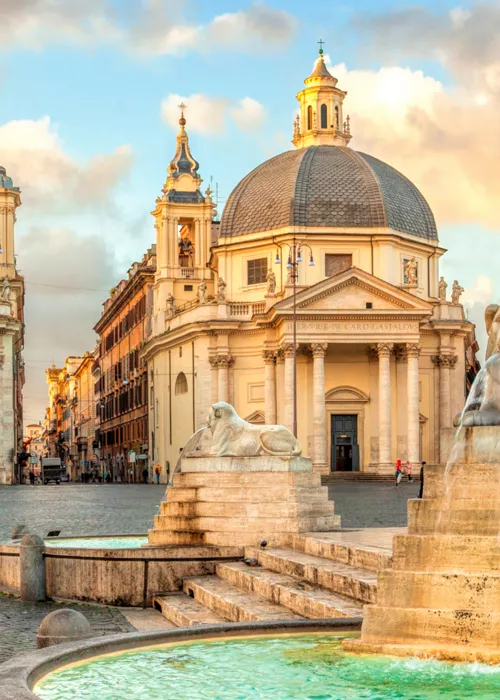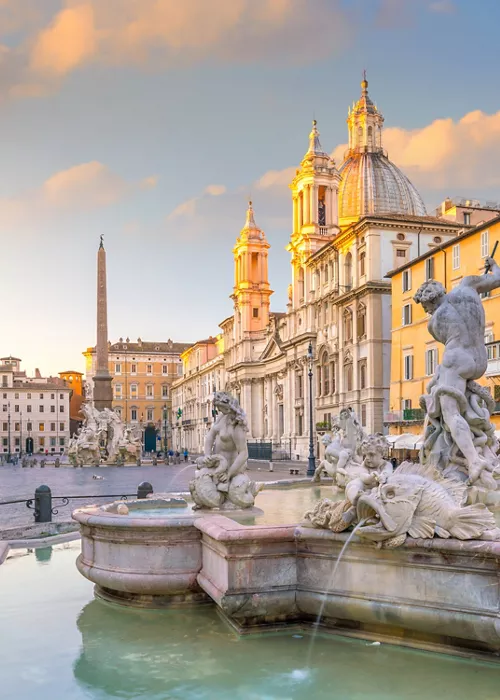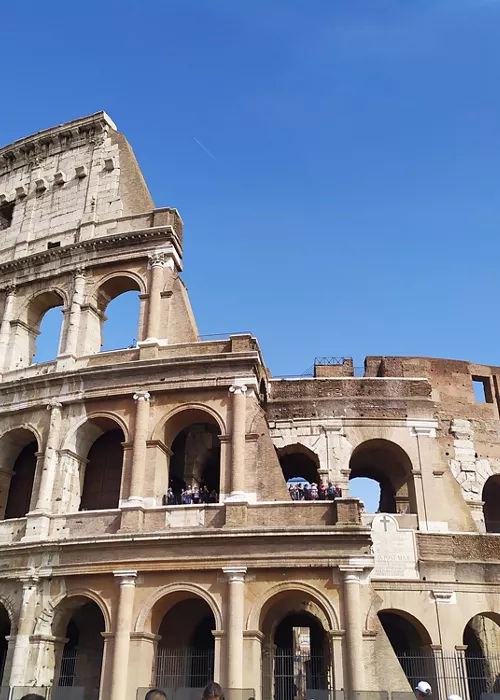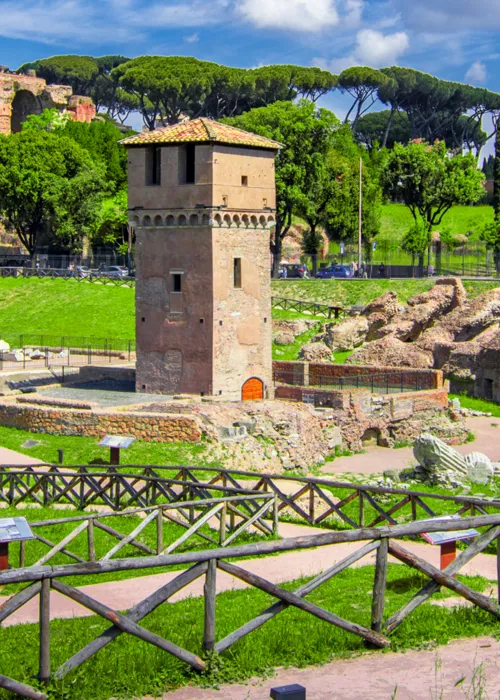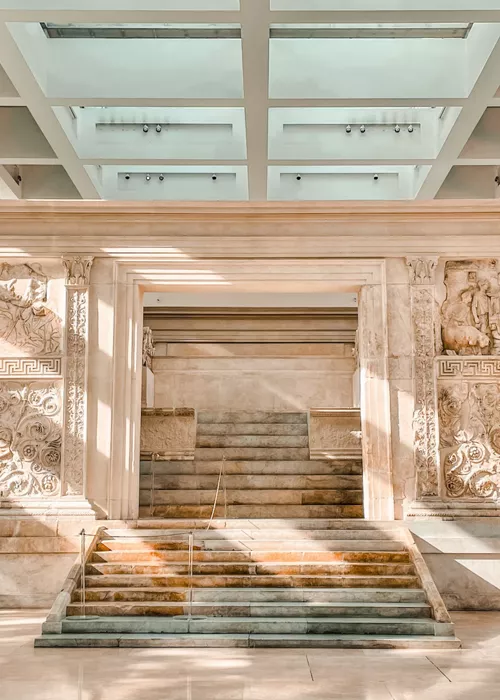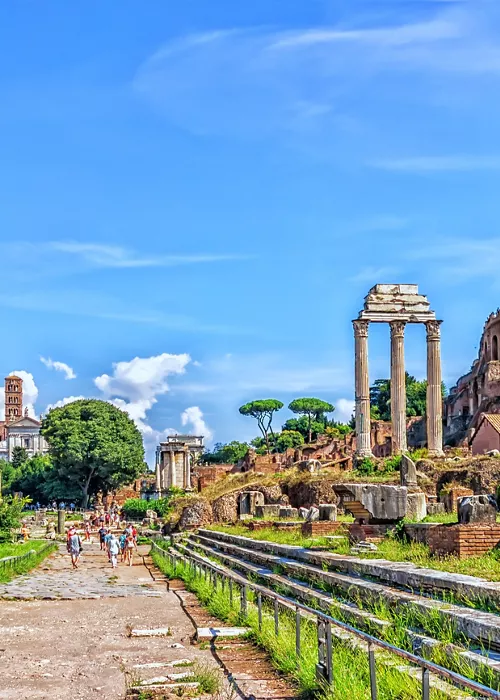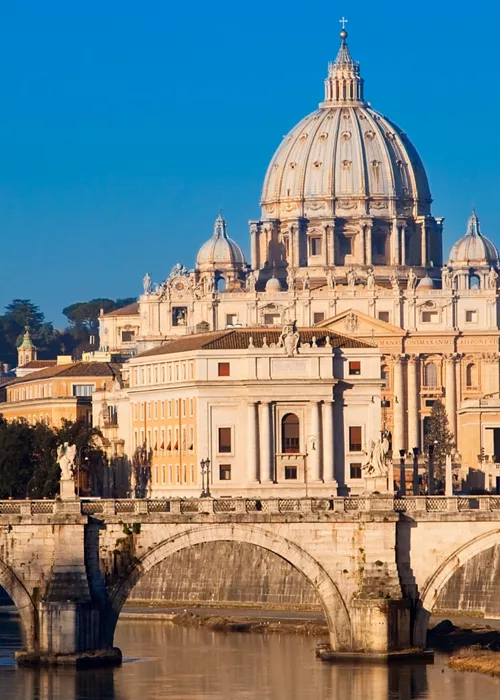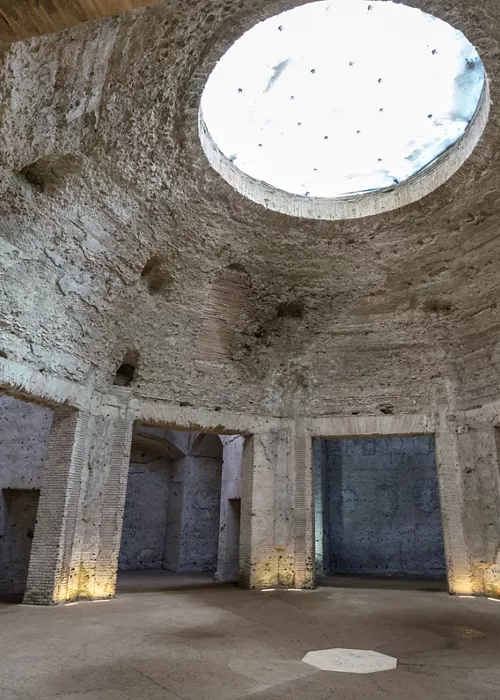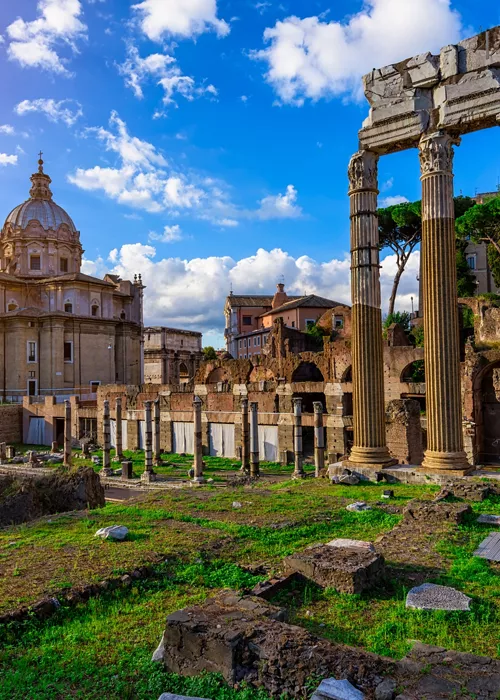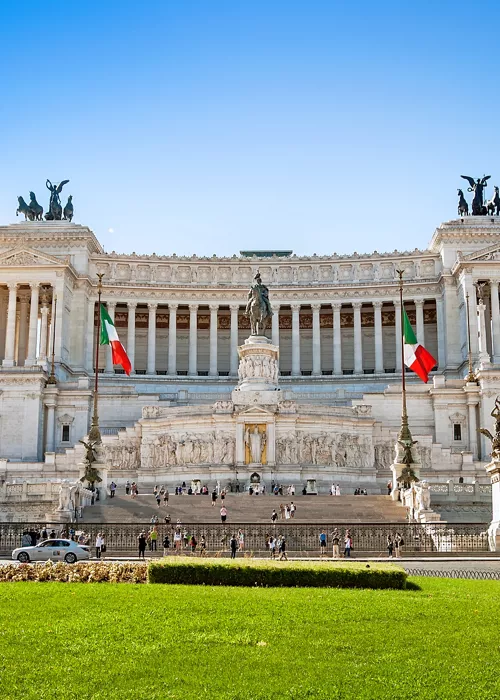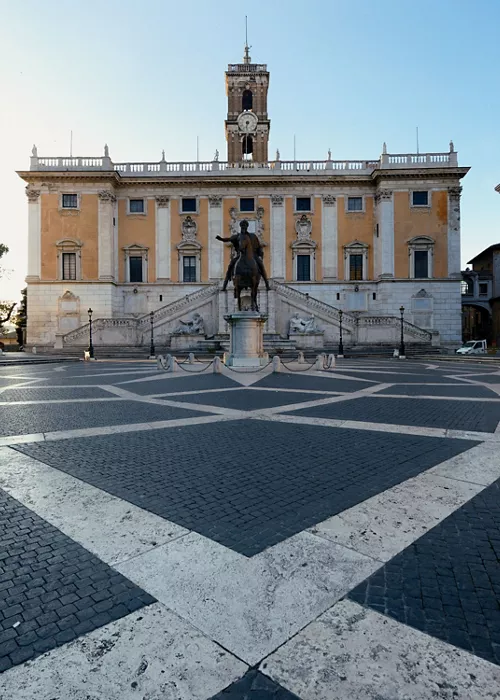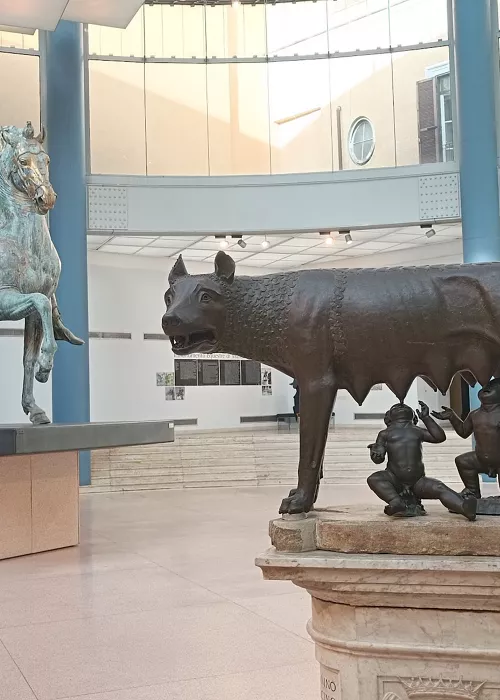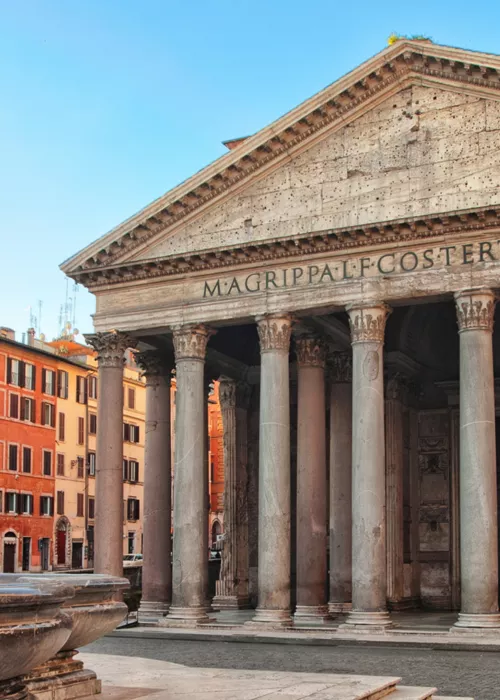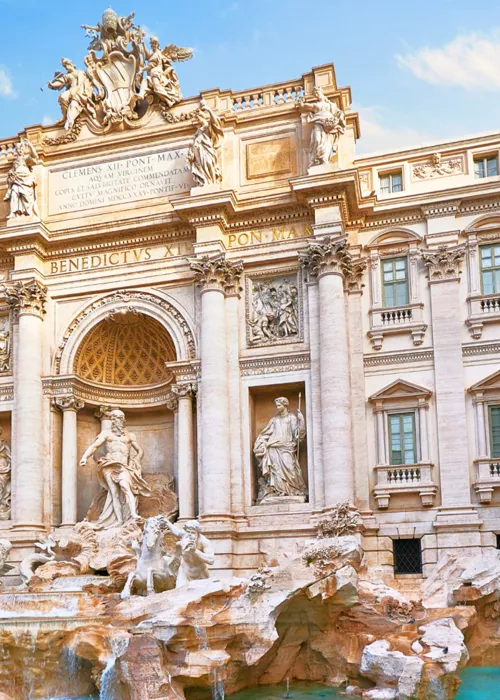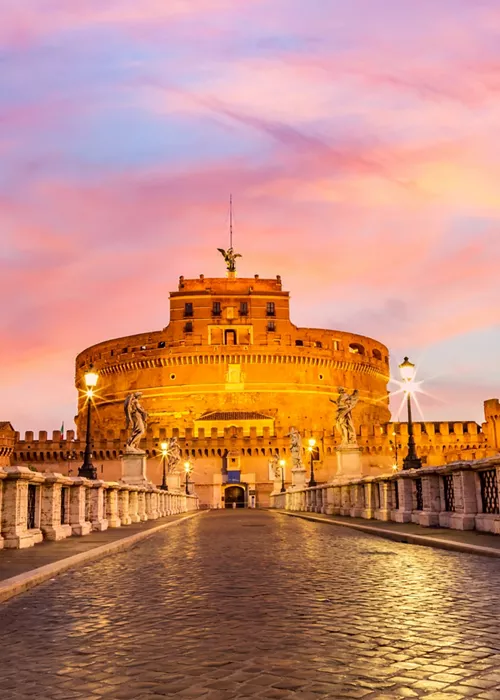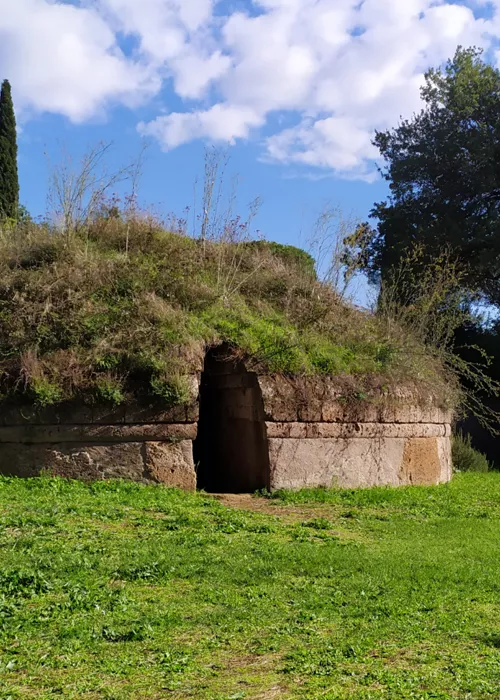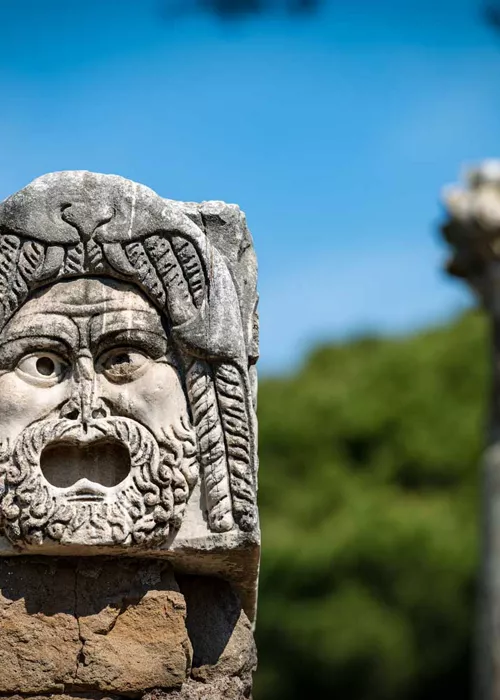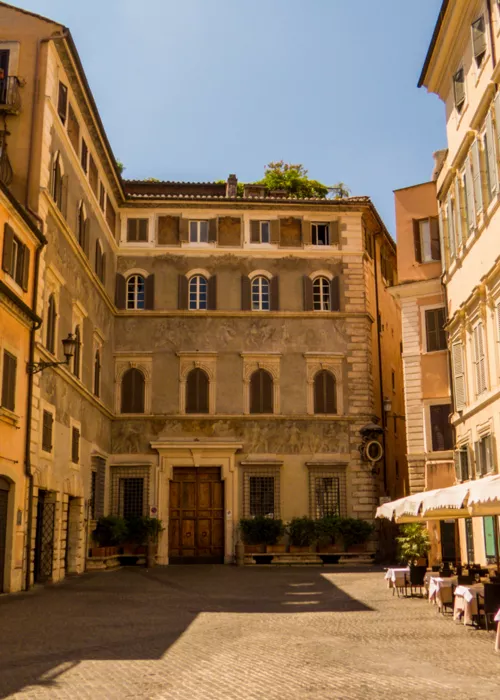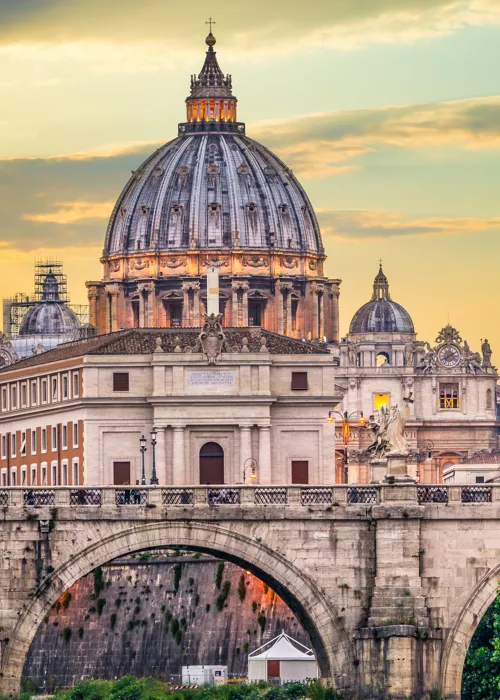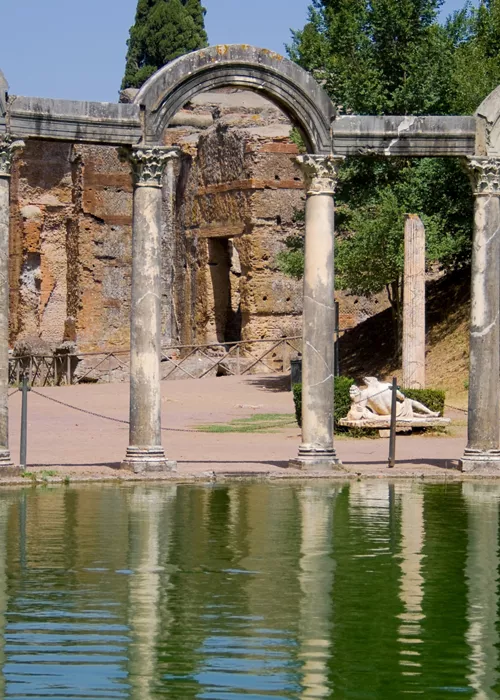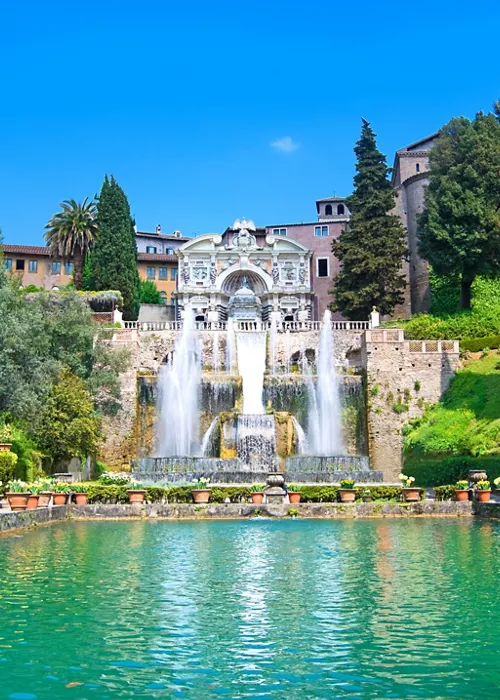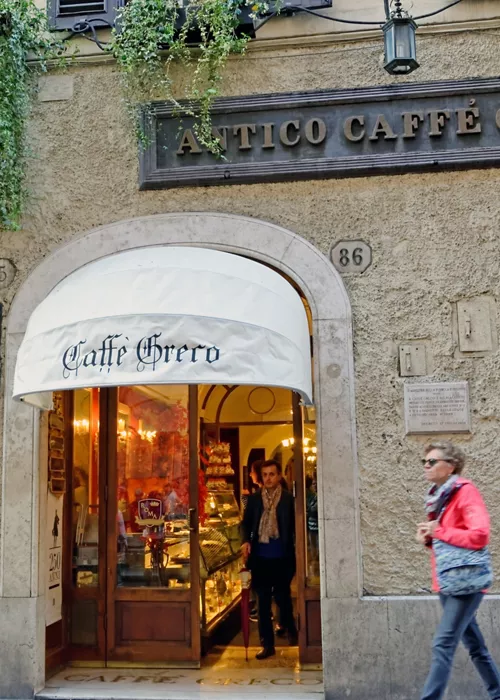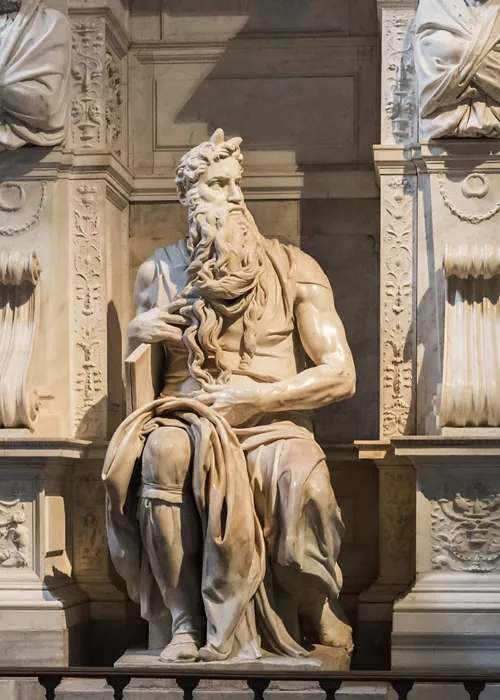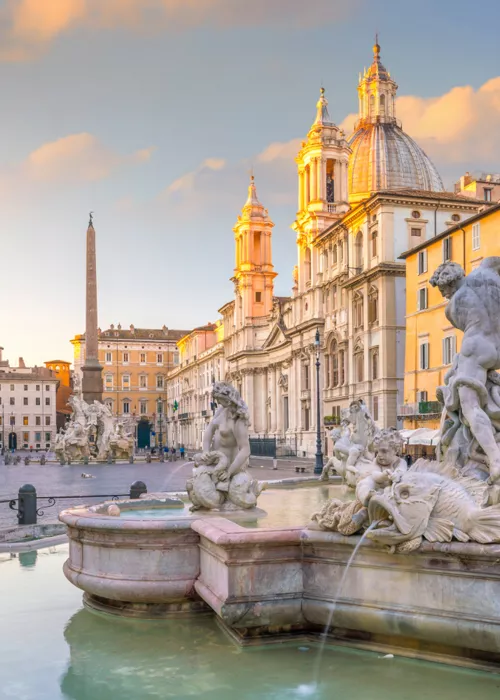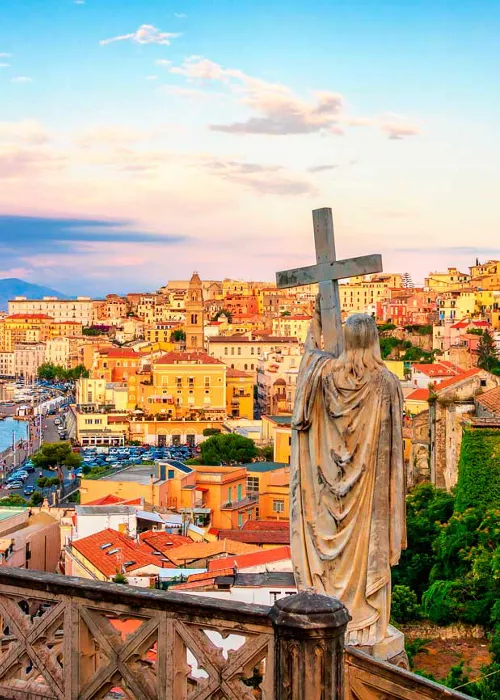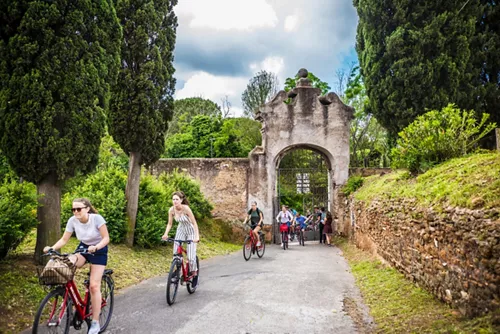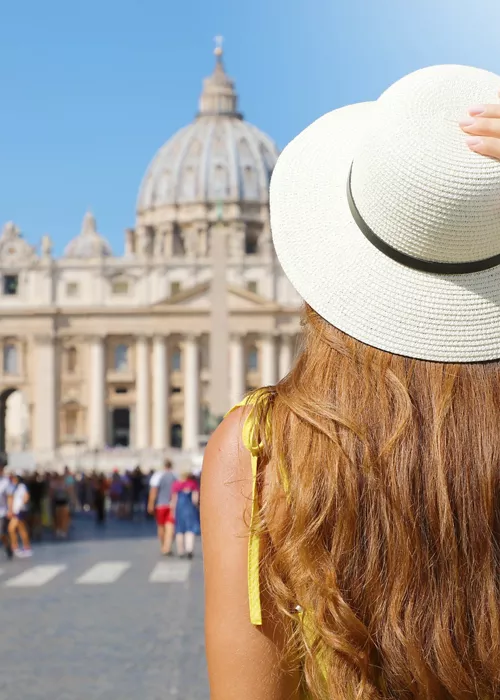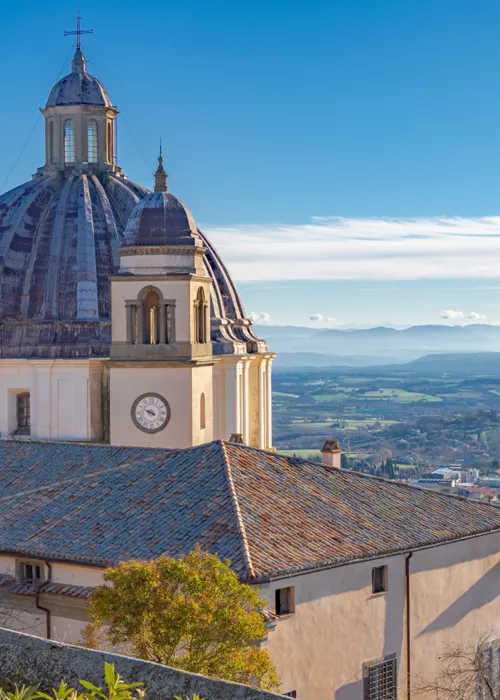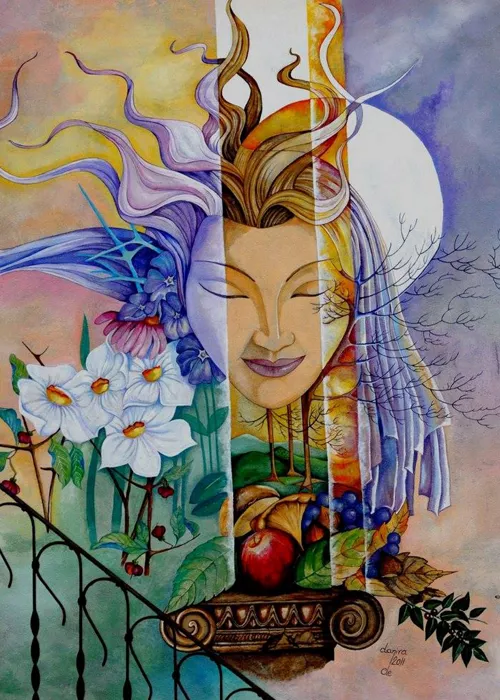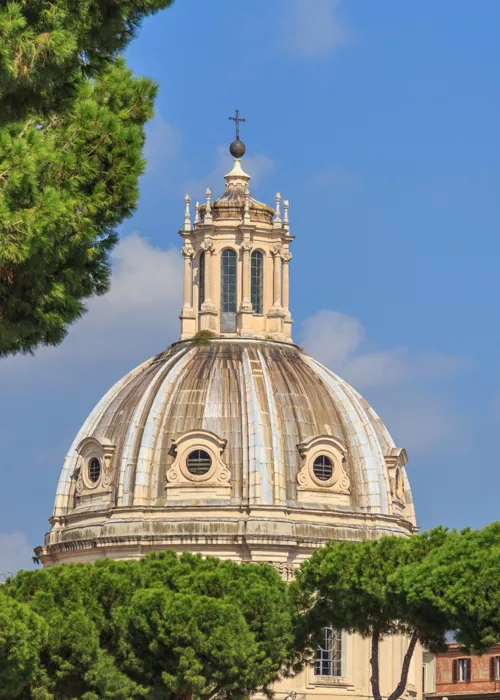The historical centre of Rome with all its beauty.
5 minutes
Its historical centre, a UNESCO World Heritage Site, includes no less than 25,000 points of environmental and archaeological interest. It is better to understand what interests you most and to make choices, to prioritise. Rome wasn't built in a day and certainly one day will not be enough to see it all.
How far the historical centre of Rome extends
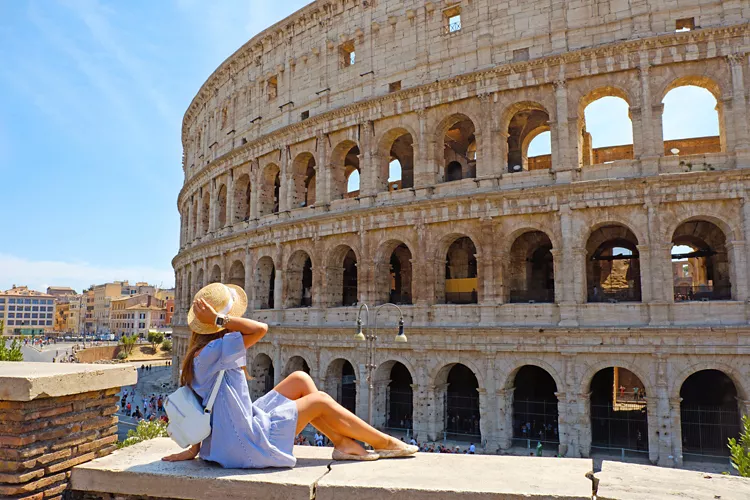
The historical centre of Rome, rich in history and charm, stretches over 14 square kilometres between the ancient Aurelian walls and the Janiculum walls.
From the Prati district in the northern part of Rome, via Piazza del Popolo and Piazza Navona, you can walk through the historical centre to the majestic Colosseum and the nearby Circus Maximus, in a unique walk that will be carved in your heart forever.
History and information on the historical centre of Rome
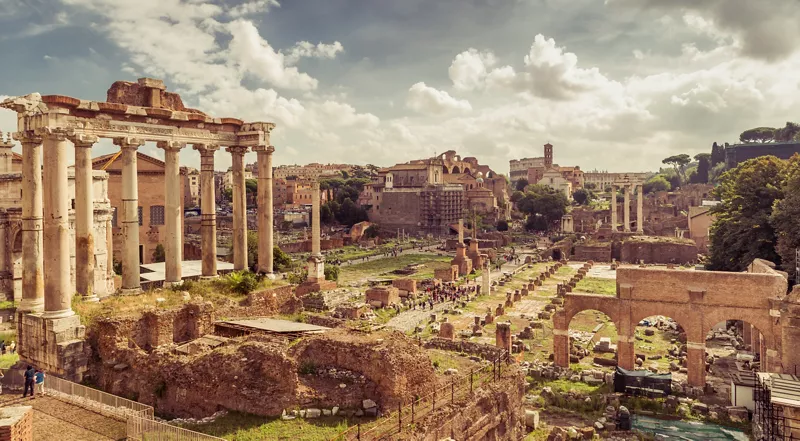
Legend has it that it was two brothers, Romulus and Remus, who founded Rome in 753 BC, suckled by the famous she-wolf, which has become the iconographic symbol of the capital. What made the city great, however, was its millennial history: first the centre of the Roman Republic, then the hub of the Empire's political and cultural life and, in the 4th century, the capital of the Christian world. From the Ara Pacis built by Augustus in 9 BC to the immense Roman Forum with the imposing Via dei Fori Imperiali leading to the Colosseum, every corner of Rome exudes history and splendour.
Also very significant for Rome was the Renaissance period, when the most important artists of the period came to the city, starting with Michelangelo and Raphael.
Why Rome is a UNESCO site
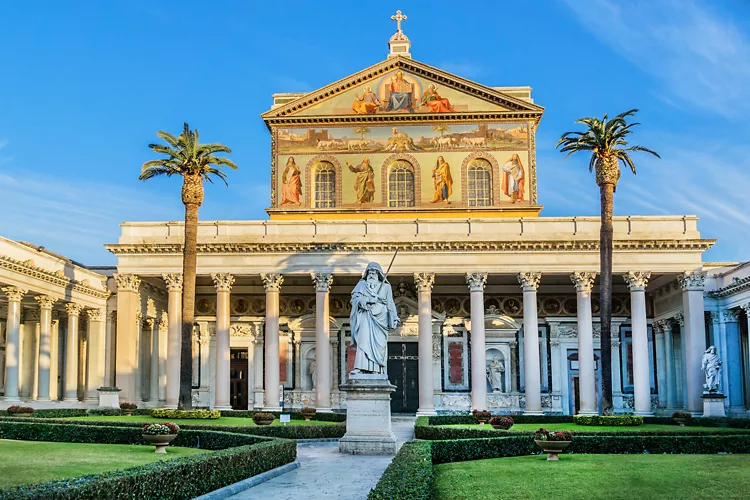
The answer to such a question is simple: how could the historical centre of Rome not be a UNESCO site? As a whole, from the important archaeological sites to the masterpieces of Renaissance art, it is a place that bears witness to more than two millennia of splendour.
UNESCO listed it as a World Heritage Site in 1980, including the early Christian basilicas of St Mary Major, St John Lateran and St Paul Outside the Walls, the second largest after St Peter's in the Vatican.
The most beautiful places to visit in the historical centre of Rome
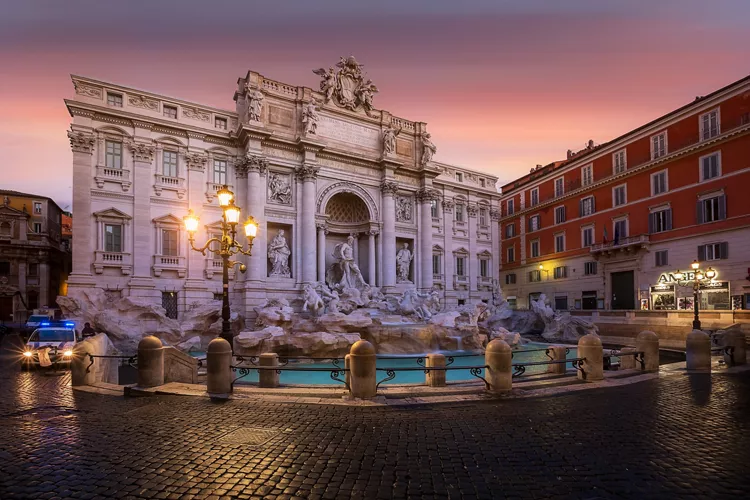
Rome is truly an open-air museum to be visited on foot, strolling through the historic centre, among the sumptuous palaces and marvellous squares, such as the one on which stands the Flavian Amphitheatre, known as the Colosseum, the symbol of Rome and the largest Roman amphitheatre in the world.
In a few steps you reach the triumphal Arch of Titus and the Domus Aurea built by the Roman emperor Nero after the great fire that devastated the city in 64 AD.
The Circus Maximus, located in the valley between the Palatine and the Aventine, will amaze you with its vastness.
The Basilica of St John Lateran, known as the Cathedral of Rome, stands on the Caelian Hill. With its five naves and richly decorated interior, the basilica was restored by Borromini for the Holy Year of 1650, but its Baroque appearance is the result of later restorations.
Walk down the scenic Via dei Fori Imperiali and, after the majestic Altare della Patria, get ready for a flurry of wonders.
Climb the wide staircase to reach the Piazza del Campidoglio, rebuilt by Michelangelo at the behest of Paul III. This is overlooked by Palazzo Senatorio, the seat of the Rome City Council, Palazzo Nuovo and Palazzo dei Conservatori, which houses the equestrian statue of Marcus Aurelius. A copy of the sculpture stands in the centre of the square, between two statues depicting the Tiber and the River Nile.
From the historic Via del Corso you can reach the Pantheon, built in the 2nd century AD as a temple dedicated to all deities past, present and future. After appreciating it from the outside, enter and look up to see the world's largest dome, larger than those of St Peter's and Brunelleschi in Florence.
The grand Piazza di Spagna, with the Spanish Steps, is just a few steps away and, around the corner, let yourself be overwhelmed by the beauty of the Trevi Fountain. Visit this jewel of water and stone.
Palazzo del Quirinale, residence of the President of the Republic since 1946, owes the beauty of its architecture to Domenico Fontana, Carlo Maderno and Gian Lorenzo Bernini. Book a visit to discover the priceless art collection inside, including statues, paintings, tapestries and carriages. And don't miss the walk through the extraordinary gardens dating back to the 16th century.
Piazza del Popolo, at the centre of which stands the Flaminian obelisk, is surrounded by the Pincio terrace and the basilica of Santa Maria del Popolo, inside which are two masterpieces by Caravaggio preserved in the Cerasi Chapel.
On the other side of the Tiber, on the bank of the river, stands the imposing Castel Sant'Angelo, originally built as a sepulchre and transformed into a fortress in the Middle Ages. Get there from Ponte Sant'Angelo for a particularly impressive view and enter for a 7-level tour that will take you up to the Terrazzo dell'Angelo for a unique view of Rome.
6 typical products and dishes from the historic centre of Rome
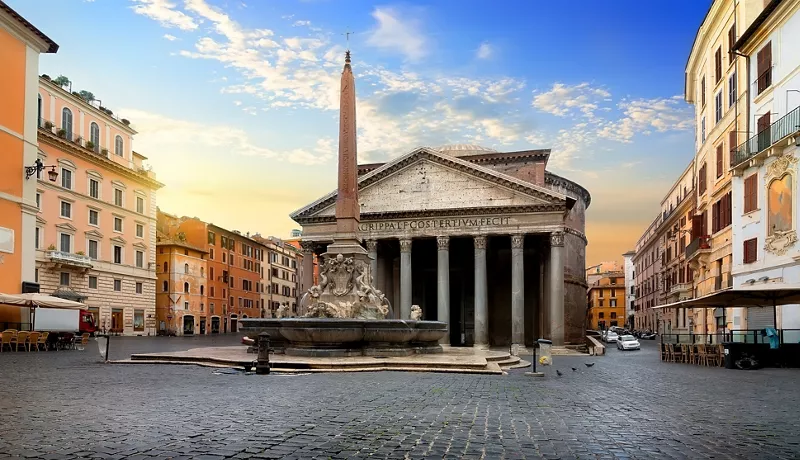
One cannot leave Rome without being enchanted by its typical dishes.
Pasta alla carbonara is a feast for the palate along with a staple of Lazio cuisine, bucatini all'amatriciana: guanciale, tomato and the ever-present pecorino cheese.
If you don't eat meat, choose pasta cacio e pepe, as simple as it is delicious.
Don't miss the artichokes alla Giudia, mentioned in cookbooks and memoirs as far back as the 16th century, the abbacchio a scottadito and the saltimbocca alla romana, slices of veal cooked in white wine and adorned with prosciutto and sage.
Treat yourself to a stop at a bakery, Roman pizza is an item of heritage within a heritage and the one snack you will want to eat, forever.

